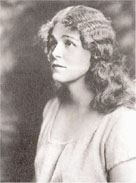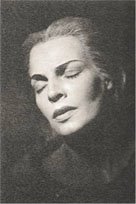Io son l'umile ancella
Mirella Freni First, read sister vilaine fille’s heartwarming tribute to Mirella Freni.
First, read sister vilaine fille’s heartwarming tribute to Mirella Freni.
My first complete opera recording purchase was the von Karajan La Boheme with Mirella Freni and Luciano Pavarotti (cf. my first opera recording, an excerpt CD of the Serafin La Boheme with Renata Tebaldi and Carlo Bergonzi). Freni’s Mimi has yet to be supplanted by another recording; I suspect it will remain unsurpassed, as it is both the technically superior and (in my heart) sentimental choice. The remarkable length of Freni’s career seems Topic A on everyone’s mind (from fans littering in opera-l to Joe Volpe’s Blackglama “What becomes a legend most?” tribute), but beyond that, the Freni mystique doesn’t seem to populate or influence much of the current operatic mythology (esp. queen-built mythology) as much as other Met Mimi exponents like Renata Scotto, even Ileana Cotrubas, or more recently Angela Gheorghiu. Only when Freni was repackaged in the last decade (a decade dominated by white bread divas) as the “Last Prima Donna” (capital L, capital P, capital D) did she enter the nebulous imagination of the queen. All this discussion may be incidental to the actual musical performance, but the divinity of the Diva, for better or worse, transcends the score and the stage, and lives “forever” in the shared canticles of the common worshippers. Of course, the catch is that there is not one mythology: the memoir of every queen traces the lonely narrative of defying myth while establishing another. (I know there are “mostly sane” Carol Vaness connoisseurs; the confusion mounts when I mouth my adulation for the late-90s-vintage Catherine Malfitano). One’s “understated delicacy” and “relatively placid” is another’s “shattering”, “ferocity”, “oozes sex and despair” (oozes? sex? despair? Must Dig Up That Recording From The Mountain Of Scottos and Prices). Indeed, as sister vilaine fille declares, there are many varieties of intensity in opera (as varied as the multiple personalities of the cabal waiting by the Met stage door at every evening’s end). That Guleghina (Oceanliner, Skyscraper, 747), which my sister loves to hate, shall not be placed on the same altar as the Freni; but there is no need, for the catacomb is vast and virtually bottomless. (The smear of filth can be contained!) The Aida, the Butterfly, the Manon Lescaut that I will take to my hospice won’t be the Freni (but the Price, the Scotto, the Albanese respectively--accounting current taste). (News: I shall not arise from the grips of death to look for a Micaela, Juliette, or a Nannetta.) However, my deathbed La Boheme shall be the Freni, not because she embodies the true “recitar cantando” (Sieglinde says “huh??” to vilaine fille’s Peri fetish; gurgling and cooing are valid sounds too!), but because she happened to be the Columbia House Classical Music Club La Boheme, moved a miraculous Mimi that lived once in that young boy’s heart, and, with such small hands, built the vivid garden that now houses the obese Sieglinde. Underneath the turgid, calcified layers of filth, queerdom, nostalgia, suspicion, arrogance, and rabid dementia, that “understated delicacy” is probably still Sieglinde’s truest heart.



